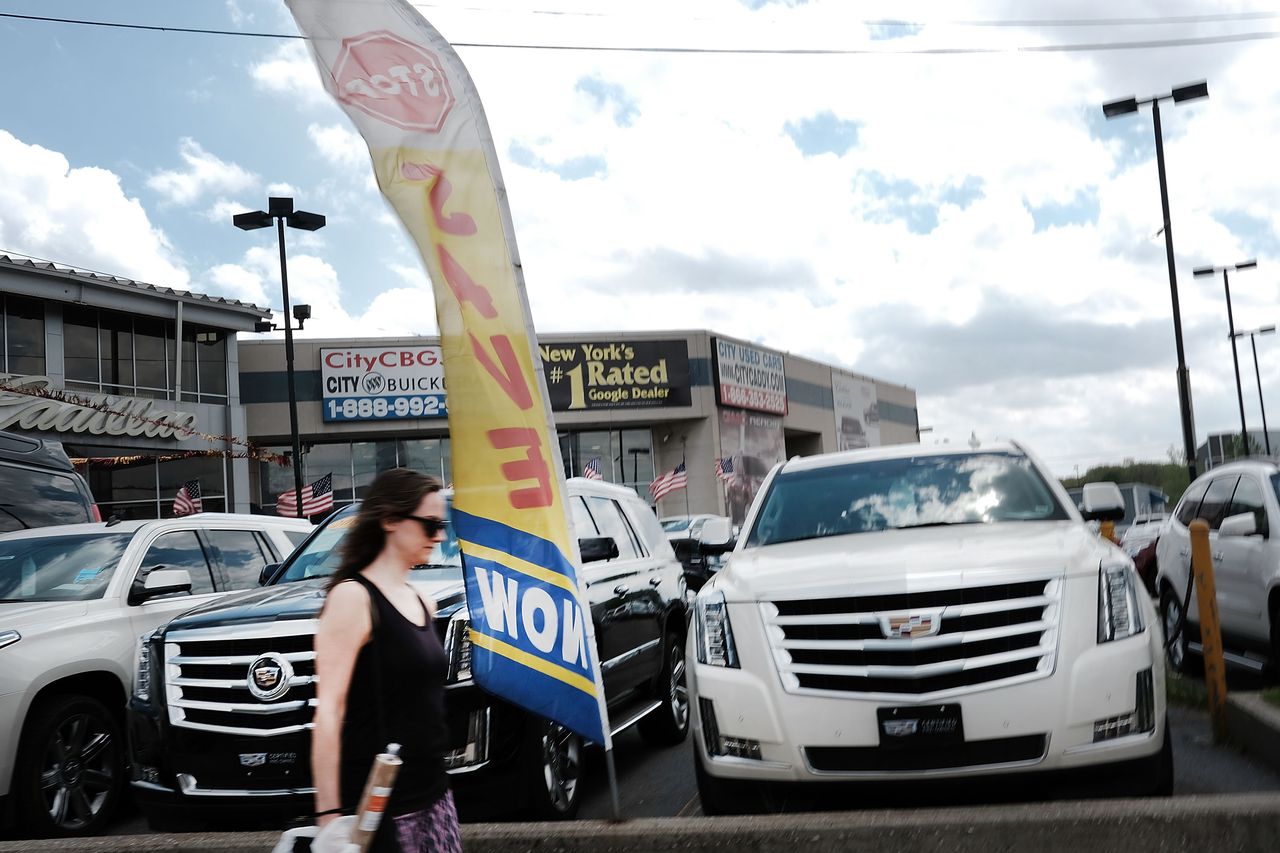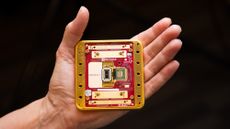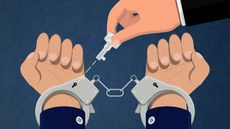Why Americans stopped buying cars
The slowdown in auto sales, explained


After years of steady growth, America's automaking industry is in a rut.
Both car sales and employment in auto manufacturing collapsed after the Great Recession, falling by a third or more. But then both trends began relentless upward climbs that lasted for years. Until recently, that is.
Auto sales began steadily falling six months ago; as of June, they were down 3 percent compared to a year ago. Ford, GM, Chrysler, and Hyundai all reported falling sales. Nissan, Toyota, and Honda enjoyed some upticks, but not enough to offset the aggregate trend in the industry. Meanwhile, plants hit a peak of 211,000 workers last year, but then fell 2 percent to 206,000 in April.
Subscribe to The Week
Escape your echo chamber. Get the facts behind the news, plus analysis from multiple perspectives.

Sign up for The Week's Free Newsletters
From our morning news briefing to a weekly Good News Newsletter, get the best of The Week delivered directly to your inbox.
From our morning news briefing to a weekly Good News Newsletter, get the best of The Week delivered directly to your inbox.
Now, some analysts that spoke to The New York Times made it sound like this is the start of a long and unpleasant downward trend. But if you look at the overall data, this looks a lot more like a plateau than a reversal. That 2 percent fall in auto industry jobs is a lot less dramatic compared to the 55 percent rise since 2008. Zooming out to overall employment in car and parts manufacturing shows a similar pattern: Growth in employment basically flat-lined in mid-2016 and has stayed there since.
You get much the same story from looking at sales, which leveled off at around 17 million in late 2015 — roughly the same number that sales bounced around between 2000 and 2008.

At a basic level, the shape of the economy hasn't changed much since 2008: Inequality is still high and wages are still stagnant. We're just back to (or almost back) the pre-Great Recession status quo, which itself wasn't so hot compared to the pre-2001 recession status quo.
Point being, unless car prices fall significantly — and so far they haven't — there's a pretty clear structural limit to how many cars Americans can consume, and thus how many people the industry can employ. We seem to have more or less returned to that threshold.
Now, one interesting wrinkle in this is the Federal Reserve.
If you aren't going to raise people's wages so they can afford more cars, an alternative fix is to have them borrow more. Enter the rise of auto lending: In raw dollar amounts, they last peaked around $1 trillion in the 2000s. But by the end of 2016, they'd risen to almost $1.2 trillion. The number of loans has shot up from 80 million in 2012 to 110 million today. And the size of the average auto loan has also risen since 2014. (The number of home mortgages, by comparison, fell from 100 million in 2008 to 80 million in 2013, and has basically stayed there.)
That debt build-up has been helped by the Fed's devotion to rock-bottom interest rates to encourage the post-2008 recovery. But now the economy is doing well enough that the Fed is inching interest rates back up. That could be dampening auto sales.
On the one hand, you could consider this a good thing for the auto industry. Delinquencies in auto loans are on the rise, suggesting this particular way of making cars more affordable has gone about as far as it can without becoming disastrous.
But while popping the auto-loan debt bubble would be painful, it's still only one-tenth the size of the home mortgage bubble when it blew up.
On balance, the Fed's higher interest rates are really hurting the auto industry. Not so much because we should be making it easier to go into debt to buy a car; but because letting the economy run hot for a while is the best way the Fed can help fix those deeper problems of wage stagnation and inequality. If your goal is to create a customer base that can afford more cars without going into debt, there's really no substitute.
So will the auto industry just cruise along for the foreseeable future, not really growing but not really shrinking either? That depends on a few related issues.
Let's begin with automation and offshoring. If you look at the first graph again, employment may have leveled off, but it's still lower than it was in the late-'90s or the mid-2000s. Partially, that's because the economy is still pretty awful compared to those previous eras. But it's also because technology allows us to produce more cars with less workers, even as the jobs that remain are being shipped off to cheaper foreign workforces. Better trade policy could stem the latter problem. But there's not much to be done about the former.
Then there's the price of gas, which remains remarkably low. While the overall number of auto sales is down, the portion that goes to bigger gas-guzzlers like trucks and SUVs is actually up. At some point, the price of gas will rise again — though possibly not soon. Then we'll find out just how good the auto industry will be at shifting to electric and hybrid technology en masse.
Finally, there's the looming question of ride-sharing. Many analysts predict the technology could permanently cut the number of auto sales as Americans rely more on Uber or Lyft for transportation and less on cars they own themselves. And the auto companies are trying to get into that technology now, so they can profit form any future shift rather than merely lose out to competitors.
But so far this remains a possible future, rather than something showing up in the car sales data.
So like I said: There's no evidence yet of a long-term and unpleasant downward trend now. But what we'll see in five or 10 years is another matter entirely.
Sign up for Today's Best Articles in your inbox
A free daily email with the biggest news stories of the day – and the best features from TheWeek.com
Jeff Spross was the economics and business correspondent at TheWeek.com. He was previously a reporter at ThinkProgress.
-
 'There is a lot riding on the deal for both sides'
'There is a lot riding on the deal for both sides'Instant Opinion Opinion, comment and editorials of the day
By Justin Klawans, The Week US Published
-
 Pharaoh's tomb discovered for first time in 100 years
Pharaoh's tomb discovered for first time in 100 yearsSpeed Read This is the first burial chamber of a pharaoh unearthed since Tutankhamun in 1922
By Peter Weber, The Week US Published
-
 Microsoft unveils quantum computing breakthrough
Microsoft unveils quantum computing breakthroughSpeed Read Researchers say this advance could lead to faster and more powerful computers
By Rafi Schwartz, The Week US Published
-
 The pros and cons of noncompete agreements
The pros and cons of noncompete agreementsThe Explainer The FTC wants to ban companies from binding their employees with noncompete agreements. Who would this benefit, and who would it hurt?
By Peter Weber Published
-
 What experts are saying about the economy's surprise contraction
What experts are saying about the economy's surprise contractionThe Explainer The sharpest opinions on the debate from around the web
By Brendan Morrow Published
-
 The death of cities was greatly exaggerated
The death of cities was greatly exaggeratedThe Explainer Why the pandemic predictions about urban flight were wrong
By David Faris Published
-
 The housing crisis is here
The housing crisis is hereThe Explainer As the pandemic takes its toll, renters face eviction even as buyers are bidding higher
By The Week Staff Published
-
 How to be an ally to marginalized coworkers
How to be an ally to marginalized coworkersThe Explainer Show up for your colleagues by showing that you see them and their struggles
By Tonya Russell Published
-
 What the stock market knows
What the stock market knowsThe Explainer Publicly traded companies are going to wallop small businesses
By Noah Millman Published
-
 Can the government save small businesses?
Can the government save small businesses?The Explainer Many are fighting for a fair share of the coronavirus rescue package
By The Week Staff Published
-
 How the oil crash could turn into a much bigger economic shock
How the oil crash could turn into a much bigger economic shockThe Explainer This could be a huge problem for the entire economy
By Jeff Spross Published